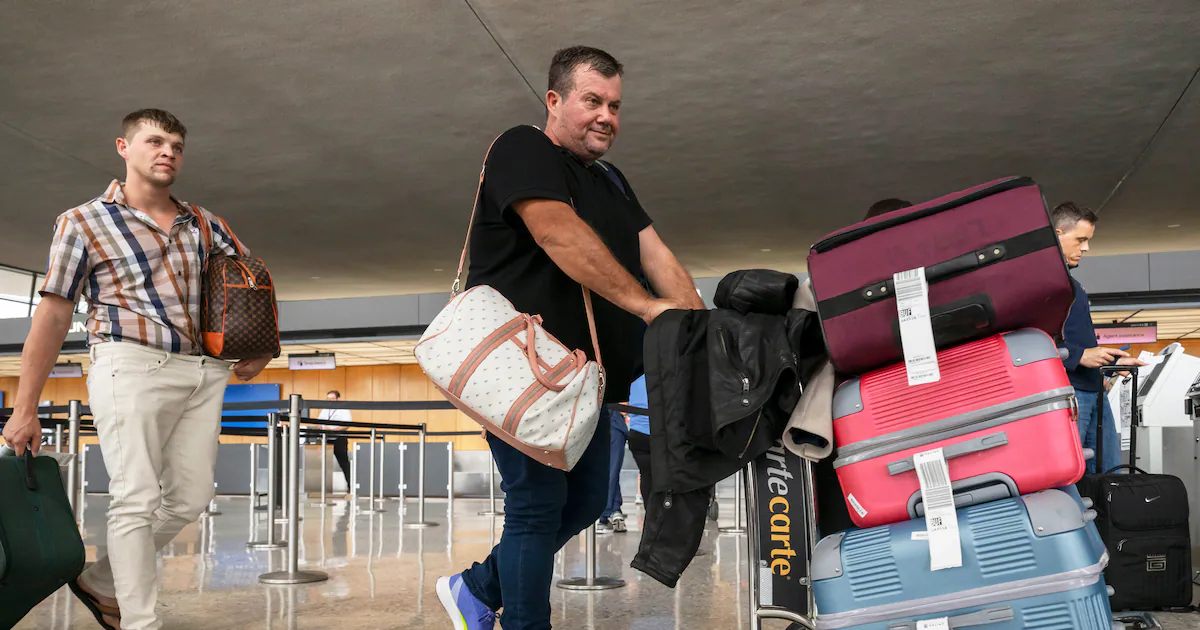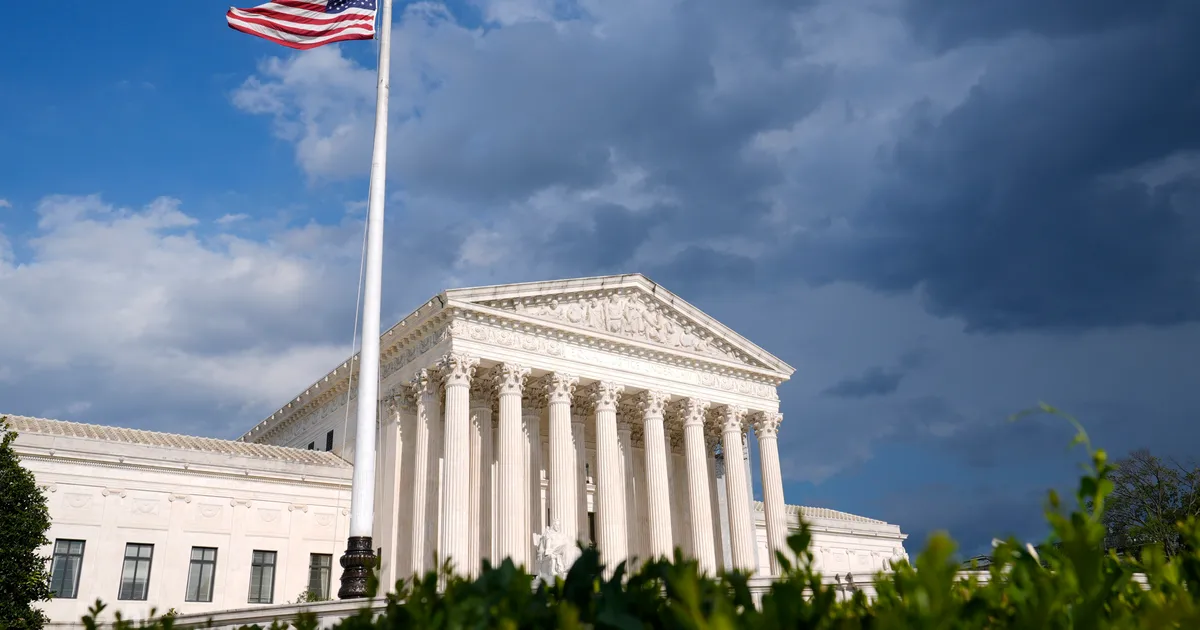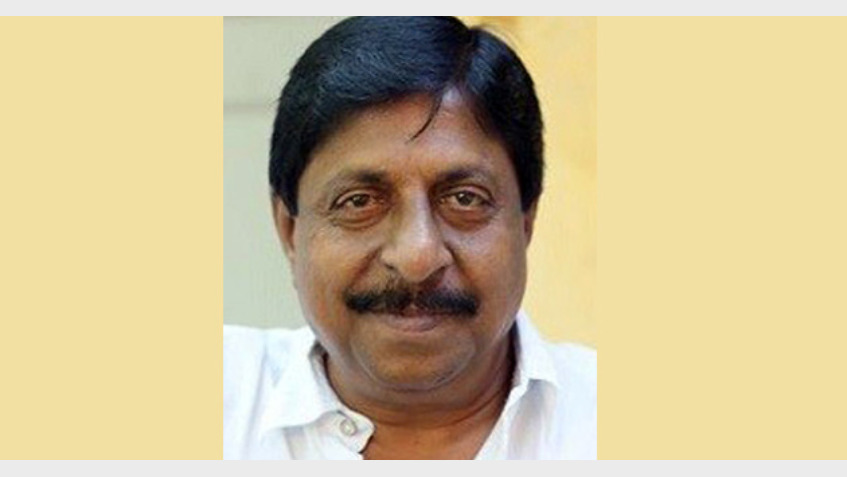Copyright Anchorage Daily News

The Trump administration’s plan to overhaul the U.S. refugee resettlement process, including a drastic reduction in overall annual admissions, coincides with a concerted effort to prepare thousands of White South Africans to relocate to the United States through the system, according to documents reviewed by The Washington Post and people familiar with the effort. If the administration succeeds, almost all people admitted to the U.S. as refugees - as many as 7,000 from a maximum potential pool of 7,500 - could be Afrikaners, a group not traditionally eligible for the program but one that President Donald Trump says has been tyrannized by South Africa’s Black majority. The remainder may be chosen because of their ability to speak English or their views on “free speech,” people familiar with the matter said, upending a system that for decades had taken in people fleeing conflict and persecution from all over the world regardless of race or language. The State Department has set a goal of processing 2,000 Afrikaners for resettlement by the end of October and an additional 4,000 by the end of November, according to two people familiar with the matter, speaking like some others on the condition of anonymity because they were not authorized to discuss the administration’s objectives. Shortly after entering office, Trump issued an executive order temporarily halting the admission of most refugees, including those already vetted by the U.S. government, pending a review. Trump made an exception for Afrikaners who he has said face racial discrimination, a characterization rejected as unmoored from reality by South African officials and some Afrikaners themselves. The initiative, begun in May, has experienced a slow start with fewer than 400 Afrikaners arriving as refugees in the United States through the end of September, people familiar with the matter said. The administration had an early goal of resettling 1,000 people by the start of this month, according to the documents reviewed by The Post and people familiar with the matter. When it became clear that was unrealistic, officials set a new target of getting 1,000 people processed for admission. Others familiar with the situation said the administration’s resettlement efforts have been slowed at least in part by the Afrikaners themselves, with some changing their minds about relocating to the United States after going through security and medical screenings or electing to delay their journeys to sell property and belongings. The State Department rejected any suggestion that it had failed to reach its resettlement goals, saying in a statement to The Post that the refugee program was operating “at record speed while upholding the highest standards” and that 700 Afrikaners were ready to travel to the U.S. when the ongoing government shutdown ends. “There are thousands of more people in the pipeline,” the statement says. “Unfortunately for additional vulnerable individuals seeking to escape persecution, no refugees will be admitted … until Democrats decide to reopen the government,” White House spokeswoman Anna Kelly said in an emailed response to questions. In its final year, the Biden administration set the refugee admissions cap at 125,000, with the Democratic Republic of Congo and Afghanistan among the top countries of origin. The Trump administration has said that approach posed a national security risk. “Any refugee admitted to the United States must be in the national interest of our country,” said Tommy Pigott, a spokesperson for the State Department. The Trump administration is expected to announce soon that it is slashing the number of refugees it will resettle and putting a new focus on people who can speak English, according to a senior State Department official who spoke on the condition of anonymity to discuss the plan. The cap could fall as low as 7,500, this person said and documents reviewed by The Post affirm. The administration has considered other ways it can radically change the refugee process. A recent report drafted by the State Department singled out “free speech advocates in Europe” as another group that could be considered in the future, said a former U.S. official who had seen the document, adding that it was clearly discussing far-right entities there. “There was no ambiguity of intent,” the former official said. The State Department did not respond to a request for comment on the proposal to resettle Europeans. With the push to resettle Afrikaners, the United States also has cut out the international bodies that help coordinate resettlement efforts. The United Nations’ refugee agency, for instance, had previously made referrals to the State Department, which in turn screened those candidates. But in South Africa, that step is being conducted in part by Amerikaners, an advocacy group founded by Sam Busà, a South African woman of British descent. Busà declined to comment. Part of the vetting involves a security and biometric screening, an intensive process typically performed by the Department of Homeland Security that can take years in some cases. Under the Trump administration’s updated procedures, many Afrikaners are being vetted in as little as a week, people familiar with the matter said. The State Department has acknowledged moving through the process more quickly but says standards remain high. Despite the Trump administration’s moves to fast-track the admissions process for eligible South Africans, the effort had proceeded slowly. One significant issue, said people familiar with the matter, is the reluctance of some Afrikaners to relocate when the opportunity to do so is presented. During the third week of September, for instance, State Department officials booked and paid for 50 seats on commercial flights from South Africa to the United States, but only three people wound up traveling, one person said. In its statement to The Post, the State Department said, “This is not abnormal.” It’s often the case that seats on U.S.-bound flights are bought in bulk and that some end up canceled, the statement says. By sharply limiting the number of refugees overall who are allowed into the United States, the statement notes, the Trump administration has secured a “significant cost savings for the American people.” The situation also is unusual as, traditionally, most refugees who seek resettlement have already fled their homes, often to a refugee camp or a third nation. In the past, many refugees “had already lost everything that they owned,” said Anne C. Richard, a senior official in the State Department’s refugee office during the Obama administration. Richard said that it was possible that some of the Afrikaners genuinely do qualify as refugees who merit resettlement but that the process appears to be working based on a quota rather than a need. “Refugees have to make their case. They have to apply, and then their cases are reviewed,” she said. Instead, Richard said, the Trump administration seems to be “trying to make some sort of case about reverse racism rather than … having smart reforms.” Though many of the less than 400 Afrikaners who have been resettled thus far appear comfortable in their new home, some have offered more cautious views of life in America, often focusing on difficulties finding employment or the higher cost of living. Charl Kleinhaus, a South African farmer who arrived in the United States in the spring, was resettled in Buffalo but within days moved for a job he had found in South Dakota. In doing so, Kleinhaus - whose acerbic social media posts have faced backlash - relinquished the housing assistance and other resources he was eligible to receive through the U.S. government. In an interview shared later on YouTube, Kleinhaus, who did not respond to requests for comment, said that a lack of domestic help was the biggest challenge for him. “There’s no kitchen lady you call to sweep the house, or clean the house, or stuff like that,” he said in the interview. “You do the work yourself.” - - -



